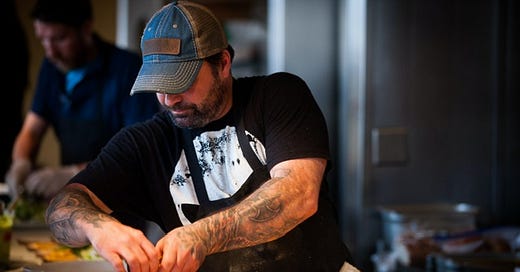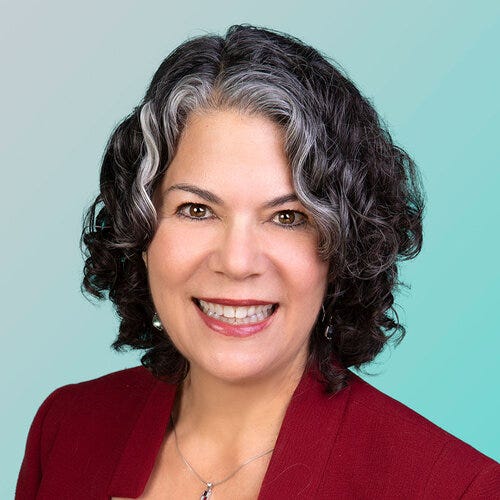Workers Are Quitting Jobs In Droves: Two Authors Offer Thoughts On What’s Behind This
There’s a ton of talk these days about the “Great Resignation.” And for good reason as this massive surge of workers quitting their jobs is having a profound impact on the U.S. economic recovery.
Among the businesses most vulnerable to an employee exodus are those in the service and retail industry sector. Financial firms and healthcare are also ripe for these shifts.
Executive consultant and business and career strategist Connie Steele in an interview with “Great Books, Great Minds” offered some insightful perspectives around the deeper realities of what’s occurring as well as how companies might be able to respond.
Steele is the author of Building the Business of You: A System to Align Passion and Growth Potential through Your Own Career Mashup, a book that explores the transitional shifts taking place in today’s career narrative and how to best navigate them.
She says that her advisory work and recent book have been informed by her own journey and path.
“As a child of immigrant parents and a first-generation Chinese-American, I was always striving to find success. Certainly, there was a very traditional, linear, sequential career growth and development model that was ingrained in me.”
Steele goes on to say that the cultural underpinnings of doing well in this country revolved around doing well in school, getting into a great college, and obtaining a degree that lead to a prestigious professional career.
“It was very much about conforming to parental expectations as well as what society considered successful. Culturally I had to align with my parent’s expectations and make them feel proud. But at the time I had no idea what I wanted to do.”
Working at a top consumer packaged goods company says Steele, taught her a lot. “While I was unhappy, I learned a lot and had many ups and downs like all of us.”
Her biggest discovery? That a meritocracy really didn’t exist where she was working.
In the ensuing years, she elected to pursue marketing roles in technology because as she puts it, “I was using my left brain so much that I didn’t realize I’m also very right brain and very creative.”
So from 2000-2007, she worked at AOL, eventually ascending to the role of Director of Corporate Product Marketing and Product Management:
“Again, it was an environment where I wasn’t happy. It was toxic and my children were young. They were 2 and 5 and I was commuting about two hours or so a day. Working 70-90 hours a week I’m like ‘wait a second, this isn’t what I thought I wanted.’ I originally thought this was what success, title, power, at least the traditional definitions, meant only to realize that this wasn’t fitting what I realized I needed.”
At the time, she says, there really weren’t alternatives for working moms where you could continue growing professionally in an executive position while also being there for your kids. So she chose to leave, knowing that she had to identify a better work/life fit.
“I really wanted work to fit around the life I wanted to lead. So that led me to start my journey as an independent consultant and business owner while continually assessing, learning, iterating, and trying to figure out what it was that I really wanted to do. In other words, what fits me.”
All of this, she says, is what ultimately led her to write “Building The Business of You.”
“The book was the culmination of my growing understanding of generational and societal trends and macro-social dynamics that identify what we as humans want and what we need. While the predominant narrative at least in the tech world continues to be themed around machine learning and AI, the question ultimately becomes, what about the person?”
Amid the “Great Resignation” that’s taking place, Steele believes that it’s important for people to embrace the fluidity of a future that feels increasingly uncertain.
“Fluidity is what the future of work is really about. It’s not about being rigid, fixed, siloed, sequential, and about conforming. It’s fundamentally about being non-linear, fluid, collaborative, multimodal, multidimensional, and possessing individual agency.”
She asserts that this trend toward leaving one’s job to explore options reflects this need to have greater control over our whole selves.
“Many of us spend much of our careers being loyal to an organization or hoping for stability when that hasn’t played out. We haven’t felt fulfilled or happy which has had a physical and mental impact on us.”
According to Steele, the new normal that is currently taking involves generations of workers now being able to craft together their lives by parallel pathing multiple things to see what fits.
“We are seeing this whole shift where people were literally forced to do this because of the pandemic recession. A whole generation felt like they had done everything right yet there weren’t jobs available.”
By taking a nonlinear path and talent stacking everything,
Many of us are learning that we can go and create a unique combination that really reflects us. Adds Steele:
“That career mashup can be a portfolio career. Or maybe it's something you’ve done a lot of different things in. So the roles we’re increasingly taking on are super jobs that are hybrid in nature. Frankly, everything is a hybrid now.”
She continues: “Uncertainty is the new certainty in today’s world. As a result, everyone is trying to find out what sticks for them, what represents a meaningful fit. We are all desiring to unleash our potential and move toward the progress we want to define success in the way that we want it. Everything these days is about alignment and fit.”
Achieving this, according to Steele, requires you to think of yourself as the “CEO of You,” where you are like a product or service on the web, whether you like it or not.
“Essentially, you need to do strategic planning for yourself. This is where my book can be of value as a “how-to” guide to help educate people on this new paradigm which is not linear and sequential but dynamic.”
Steele believes that the pandemic basically gave a lot of people the opportunity to reflect, have pause, and consider other options.
“After the Covid lockdowns, many workers have said that they don’t want to be forced back into an office. I believe that trend was already happening before Covid and that the pandemic just accelerated it.”
Edie Goldberg, Ph.D., founder of E. L. Goldberg & Associates and co-author of the book The Inside Gig: How Sharing Untapped Talent Across Boundaries Unleashes Organizational Capacity had this to add when asked about what emerging factors are driving the “Great Resignation” movement:
“People have had a lot of time to think about their life, their work, and what makes them happy during the pandemic. The freedom and flexibility to work where they want and sometimes when they wanted, without having to commute to work, has had a profound impact on people's lives. Having had more time for themselves and their family, work-life integration became real. And while there were some people who experienced burnout during the pandemic, this new remote approach has been generally well-received”
Goldberg cites research as reported in Business Insider which shows that approximately 40% of employees say they will quit if not given the opportunity to work from home at least some of the time. But, she says, this just paints part of the picture with respect to the “Great Resignation.” She adds:
“For those who were laid off, many thought deeply about their future, the stability their current occupation provided, and what else was possible. In some cases, the forced time off from work enabled people to get re-skilled in new fields that would improve their quality of life, and/or provide them with more purpose and meaning at work. So in the end, people are not just quitting their jobs, they are pivoting to new careers.”
In terms of how employers effectively address this trend from a recruitment and retention standpoint, Goldberg notes:
“Companies need to think more about the employee experience. Employees have earned the trust they deserve to get work done, despite not being in the office. Allowing for some remote work will be necessary to retain a large portion of your workforce. But it’s more than that. Employees want to learn and grow. They want new experiences that help them advance their career. They want to create professional connections that enhance them personally and professionally. So reducing friction in the workplace while creating an employee experience that delights staff, is what will both attract and retain talent.”
Asked to paint a picture of what tomorrow’s virtually directed workplace model might look like, Goldberg had this to share:
“We are going to need to be very intentional about creating connection and collaboration in the workplace going forward. In the past, we simply walked around the office and randomly connected with people in the hallways, or we stopped in someone's office to ask them a question. Going forward, we need to thoughtfully design experiences for connection and collaboration.”
The good news, she says, is that great technologies exist today that help us operate virtually (e.g., social collaboration tools, online teleconferencing, document sharing platforms, whiteboard technologies, etc.). In the future, she believes these will only get better.
“Culture does not exist in a building. It is in the policies, practices, and behaviors of every person in the company. Thoughtfully reinforcing the culture will be critical for maximizing tomorrow’s distributed workforce economy.”






